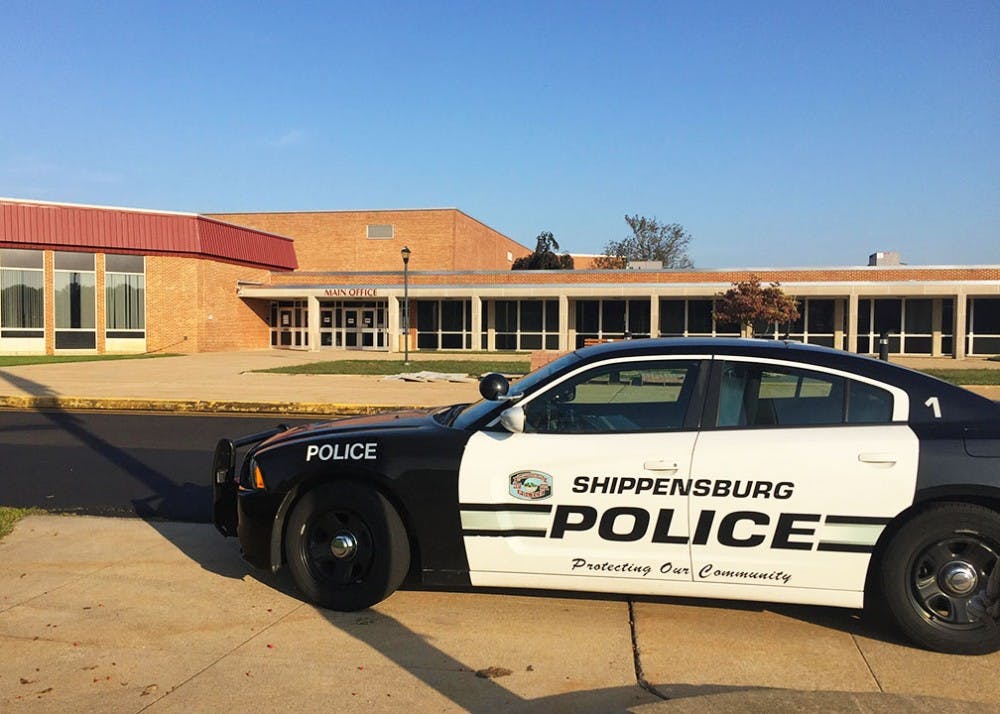A bomb threat targeting Shippensburg Area Senior High School failed to close Shippensburg’s public schools last Wednesday, Sept. 11. Students entered the building guarded by members of the Shippensburg Police Department, but otherwise classes continued as normal, a marching band rehearsed outside and a gym class exercised in the field by the school.
The community’s response on Facebook was mixed on whether or not it was the correct decision to leave the schools open — even with the additional security measures taken. Some parents opted to keep their children home, including parents of children who attend other schools in the district.
Previously, Chambersburg Area Senior High School and Career Magnet School closed on March 21, 2019, because of a credible bomb threat. This begs the question: Why would Shippensburg Area Schools not close? Was the SAHS bomb threat not credible? What factors determine the credibility of a bomb threat, and who decides this? The investigation has not yet concluded, which means that public knowledge on the events is scarce. The citizens and students of Shippensburg deserve to know if the threat was a legitimate one, and how it unfolded.
A bombing is a serious and extremely dangerous catastrophe, and not one to be taken lightly. Is a day of school worth the risk of student lives and well-being? Students deserve to feel safe in their own schools. K-9 searches and locked doors are not exactly comforting when the possibility of a bombing has already been raised. No amount of security guards and K-9 searches can take away from the fact that schools are tense places to be in in today’s era of school shootings and bombings.
On the other hand, if bombings and active shooters are going to be part of our future, we have to learn to go about our lives despite them. In a world in which bomb threats and shootings are commonplace, keeping schools open may be the best option if things are to change. Student should not have to give up their education out of fear of violence or because of the lack of action by lawmakers.
If a school district decides to close its buildings because of a bomb threat, that divorces the need for it to publicly disclose timely information because the public has no choice to make — school is closed, period. But if it is going to keep schools open and ask that children come to class, it has an imperative to inform the community the nature of the threats so that parents and students are able to make an educated decision on whether it is smart and safe to enter school buildings.
Where should the line be drawn on what makes a bomb threat credible enough to close a school? Is the decision to send a child to school incumbent upon the district, or on the parent? Does the school’s decision weigh on one person like the principal or superintendent? Is it up to politicians to pass laws that outline when a school should close in the face of a violent threat? And at what point do we grow numb to the false threats and let our guard down? At what point do we become numb to the violent targeting of our schools.
Answer these questions any way you wish — all children have a right to feel safe and secure when they are learning.
Even when these questions are answered, no student should feel unsafe at school. Every person has the right to an education and to feel safe while getting that education. School closures are not the solution to every problem of insecurity, but to not take it seriously is an even greater crime.


The Slate welcomes thoughtful discussion on all of our stories, but please keep comments civil and on-topic. Read our full guidelines here.